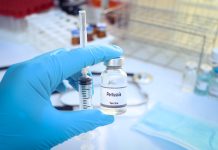Ram May-Ron, Managing Partner at FreeMind Group, explains why COVID vaccine development was exceptionally speedy
Over a year after COVID hit, we may finally be turning the corner. And while the social distancing and mask-wearing we’ve experienced has certainly helped stem the tide of infections, it’s clear that the real change-maker has been the development and widespread distribution of the COVID-19 vaccines; initial CDC studies indicate that the Pfizer and Moderna vaccines have an efficacy rate of about 90%. Compare that to the efficacy rates for flu vaccines, which is between 40% and 60% in an average year.
COVID vaccine development
The difference between the COVID vaccines and their predecessors in treating viruses is the game-changing mRNA technology that trains the body to recognise the COVID-19 virus. The technology utilises some of the virus’ genetic material, prompting the immune system to develop antibodies before it has an opportunity to cause damage to the respiratory system – unlike the virus vaccines that were developed in the past, which required that the virus itself be injected into the body in order to enable the development of antibodies.
The vaccines are the result of collaborative work by scientists and researchers around the world, who pooled their resources to come up with the vaccines in the space of less than a year. Still, the question arises: given that it takes, on average, as long as seven to twelve years to develop vaccines, how did Pfizer and Moderna develop theirs so quickly?
The answer is that although this is the first time mRNA technology is being used commercially, it has been under development for decades. Among the pioneers in mRNA research were Barney Graham, along with Drew Weissman and Katalin Kariko at the University of Pennsylvania, who originated the concept of RNA modification. The funding for that research, as well as other projects that contributed to the development of the vaccine, was largely supplied by the National Institutes of Health (NIH). Over the years, the NIH has distributed billions of dollars in research money – the Agency’s budget for 2021 is $42.9 billion – providing researchers, start-ups and larger companies with funding to pursue and perfect technologies, such as mRNA technology, which have helped improve the lives of people all around the world.
NIH funding for research
While funding for research projects can come from any number of sources, NIH funding has some distinct advantages that are well-suited to the early-stage research that can eventually mature into life-saving products and services. NIH funding is non-dilutive, meaning organisations don’t have to give up intellectual property or a seat on the board, and they don’t have to change their research, marketing or business plans – unlike in a relationship with a VC or angel, who might require the team to veer their research into a specific direction, or come to market with a product or service other than what the company originally intended. Many technologies take years to perfect, and with NIH funding, research teams can invest the time and effort needed to innovate and make progress on promising ideas and technologies that may take years to get to market.
NIH funding is distributed via its daughter agencies and government programs for university research teams and life science companies through programs such as the Small Business Innovation Research (SBIR) and Small Business Technology Transfer (STTR). While most of the NIH’s research funds university and academic-based projects, the agency provides over $3 billion a year in direct support for companies in non-dilutive funding.
Will the world fully emerge from the pandemic?
The researchers who helped perfect mRNA technology realised its potential, and fortunately for us, the NIH was willing to fund their vision. As a result of that willingness, the world has a good chance to fully emerge from the COVID pandemic in the coming months, saving millions of lives. And with continued NIH funding, research teams, start-ups and companies are working on the new and emerging technologies that will prevent future pandemics, saving even more lives in the future.











